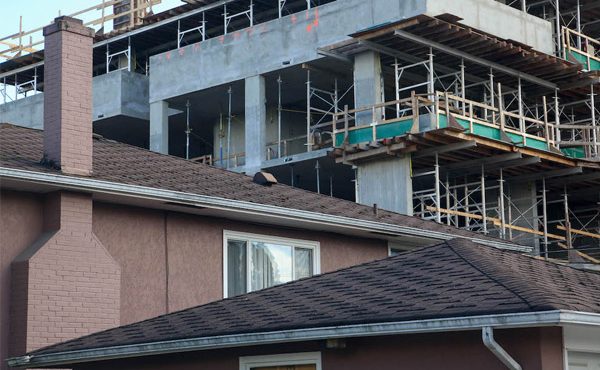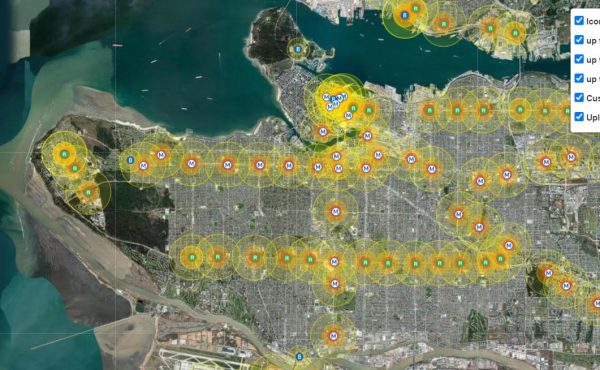
Diversity plays an important role in most, if not all, complex systems. Accordingly, it is a term used in a broad spectrum of professions and areas of study – from ecology’s “biodiversity” to the “diversification” of investments in the business world. In terms of cities and urban settlements, diversity often refers to a variety of people and households with different ethnicities, cultures and socio-economic backgrounds. Simply put, diversity is heterogeneity.
In urbanism, as with other ecological systems, diversity across a number of landscape scales and social dimensions is used as a measure of a city’s health. The concept behind this is straightforward: communities and settlements that are heterogeneous are less susceptible to catastrophic failure resulting from (rapid) change in specific sectors of urban life. For example, it is easy to see how cities with varied economies are more resilient to swings in unemployment as those impacted by such an event are distributed amidst a differentiated employment base.
The effects of this are readily evident, as many cities across the globe whose growth and success were dependent on outdated singular economies – such as old industrial models of product and resource extraction – have now fallen into severe decline with the rise of a very different global economy.
Of course, the ill effects of homogeneity are a matter of scale. We are well aware of similar industries and cultures flocking together to form areas of sameness. Look at the ethnic homogeneity of Chinatown, or the café culture of Commercial Drive.
In reality, healthy cities and economies must finely balance the need for diversity and the requirement for sameness. A shift in equilibrium in either direction can be detrimental, increasing exponentially as one reaches an extreme.
With regards to housing, the discussion of affordability is directly connected to issues of urban diversity at a number of different levels. As we all know, Vancouver’s prosperity has forced upward pressures on housing costs for decades. In recent years, the surge in real estate prices, the declining share of rental housing stock, and the disappearance of senior governments in building new social housing have compounded Vancouver’s affordability problems. While there has been a prolonged residential construction boom, much of this is aimed at the high end of the market, thus serving to exacerbate affordability trends.
One need only look to the major increases in the costs of rental accommodations in order to understand the rate and nature of this drastic change. According to Royal Lepage quarterly statistics, the rent for a standard condo on the west side of Vancouver was $2,200 per month at the end of 2007, up 50% from 2004 ($1,600 per month), and more than double the rates of 2000 ($1,000 per month). Similarly, renting a house costs $3,500 per month in 2007, compared to $1,600 in the 2001 and 2002 period.
But affordability issues go beyond simply owning or renting homes because it ultimately affects the distribution of people, activities and services. This ultimately, in turn, has severe and social and long-term economic impacts by decreasing a city’s overall diversity, and thus resilience to rapid change.
In the City of Vancouver, families with children accounted for a mere 27% of households in 2006, compared to 41% for the rest of Metro Vancouver (Statistics Canada, 2006 Census). This uneven distribution of families with children is directly related to the elevated cost of homes and property within Vancouver, as well as the paucity of developers targeting this demographic in their new developments.
Families with children need more space than other households. As developers seek to maximize their profits through maximizing the density of people and units on each site, dwelling types that target households with large incomes and minimal space requirements are often chosen. This reality ultimately forces the dispersal of households who do not fit this demographic market – families with children and/or extended families, in particular – and serves to create homogeneous, less robust neighbourhoods composed of similar households.
The lack of rental housing throughout Vancouver, briefly discussed earlier, is a further barrier to accommodating families with children since this type of tenure supports the vast majority of young families who rent prior to purchasing. Consequently, as the number of rental units decreases and average rents rise faster than incomes, families with children are inevitably pushed out.
Magnifying the problematic situation, this process creates a positive feedback loop as the essential services that support these households and vice versa – such as schools and daycares – become endangered in areas losing the population. This fact is reflected locally in pressures to close several neighbourhood schools or decrease funding for family-related services throughout Vancouver.
Furthermore, families with children are also families with prime-age workers. Cities that passively allow the cost of housing to increase also suffer the troubling attrition of workers who cannot afford to live close to work. Thus, the same forces that are pushing these families with children to the fringes of Metro Vancouver are also affecting workers of all stripes, especially workers in low-paid service industries.
Of particular concern for the well-being of Vancouverites is the impact on workers providing essential public services, such as health, safety or educational services. An example of this was made in a recent article in The Province, reporting that the Vancouver Police Department (VPD) is concerned about its ability to recruit new officers. Already, only 18% of the city’s police officers live in the city proper. The rest are scattered throughout the suburbs, with some commuting from as far away as Abbotsford and Chilliwack.
Undoubtedly, there are a number of factors contributing to this phenomenon, including personal preferences, but it is very likely that an inability to purchase a home of one’s own within the means of an average income necessarily acts as a deterrent.
So far, I’ve focused on people and families of average means. I’ve done this because such households account for the majority of the population as well as the fact that, if they cannot afford a place to live in Vancouver, those with limited incomes are even less likely to be accommodated.
However, briefly discussing the effects of increasing home prices on “low-income” households is critical to understanding the long-term impacts on our city because those included in this term are extremely varied – students, artists, and “creatives” – and are of great importance to the development of our urban centres.
Richard Florida’s renowned book Rise of the Creative Class clearly describes the movement of from corporate-centred economies to people-driven ones founded on a culture of openness, diversity, innovation and risk-taking leadership. Furthermore, he shows how companies are now moving to locations where such people live and not the other way around. This phenomenon is directly related to cities and the tangible and intangible qualities that they possess.
Accordingly, Florida demonstrates that the “creative class” does not follow the old definition of people as simple economic units of production. These are people with a range of social, cultural and personal desires that must be in place for them to thrive. It goes without saying that attainable housing targeted at the limited incomes of this demographic is the fundamental component of the equation. According to Florida and other growing numbers of Creative City advocates, cities that fail to do so will find themselves lagging behind those that do.
But it is not only the “creatives” that are a strong part of the limited income demographic. Ordinary immigrants and newcomers often begin life in new cities at this level and are “creative” in their own right as incubators for new and innovative businesses across the country. From restaurants to computer repairs, these people are an important part of Vancouver’s growth and development.
Consequently, politicians and municipalities often speak to the importance of advancing the corporate economy with their global networks and hypermobility. Yet they rarely recognize the underlying infrastructure of people, activities, and jobs that are required to run such an economy – from truck repair to office cleaning, paper routes to landscape care. In reality, lower-wage industries, and the people and families that are employed by them, are as important to urban development and success as corporate CEOs and board members.
Consequently, a large share of such jobs are held by women and immigrants with families whose spatial needs and economic means simply do not fit into the demographic living in the sleek glass towers of downtown Vancouver, or even the new duplexes densifying East Vancouver at a bargain $700,000.
Toward this end, several people hold the inclusion of laneway homes into the housing stock offered throughout the city as a golden solution to affordable housing. And, insofar that it fills a big void in the limited dwelling types currently offered (primarily high-end condos with townhouse podiums or awkwardly designed duplexes selling at inflated prices), this model of living is very beneficial.
However, by no means will this significantly alter the economic landscape of housing. Firstly, given that there are few existing laneway homes, the vast majority of these will have to be built from scratch. This carries the high costs associated with any new construction – costs that are passed directly to those purchasing or renting the space.
Secondly, in order for laneway building to be truly effective, it would have to target a multitude of households, including those with children. This inflates the spatial requirements and, therefore, the average costs per square foot. A compact three-bedroom home, for example, can be accommodated in a tight 1100 sq.ft. structure, if well designed (an important tenet). On average, this is equivalent to the majority of the half duplexes currently being built on the Eastside, selling for an average cost of about $650,000. It would be naïve to believe that the cost for such a home will decrease just because it sits on an alley, above a garage.
Once again, this is not meant to take away from including laneway homes to Vancouver’s housing stock. It is a necessary undertaking. However, one must be careful with automatically correlating the diversification of house types with them being more affordable – especially when all these homes must be newly constructed. One thing is clear: the introduction of laneway housing will not solve the city’s affordability issues in their entirety.
Taken as a whole, the above clearly demonstrates that Vancouver is quickly losing a foothold on providing the basic services required by its population to sustain a healthy city capable of accommodating the incoming populations that support strong local economies.
The city-wide scale and the rate at which the erosion of attainable housing is being lost is alarming and, in turn, makes the city more susceptible to failures resulting from economic or other changes.
In the end, accommodating a diversity of households through providing a variety of house types for families of different sizes and incomes, is a critical element in determining their long-term economic and social sustainability by creating robust social and economic structure.
Progressive and aggressive strategies that do not rely on “the market” and are created specifically to maintain the required heterogeneity, through ensuring the affordability of housing for a wide range of people, must be a part of any political urban agenda.
***
Other pieces in this series:
- The Costs of Unaffordability – Introduction
- The Costs of Unaffordability – Part 2: Affordability and Diversity
- The Costs of Unaffordability – Part 3: Affordability and Environment
- The Costs of Unaffordability – Part 4: Affordability in Vancouver
- The Costs of Unaffordability – Part 5: Epilogue
**
Erick Villagomez is one of the founding editors at Spacing Vancouver.




